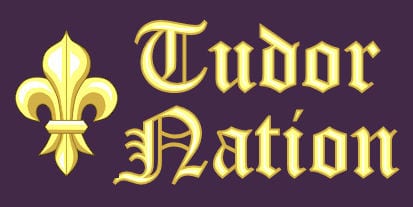Tudor Religion Introduction
The Tudors ruled from 1485 until 1603. Their rule is one of the most popular and well-known periods in English History, punctuated with executions, multiple wives, failure to produce male heirs and the changing face of Tudor Religion. During the 118 year rule of the Tudors, the official religion changed four times.
This article details the official religion of each of the Tudor monarchs and offers insight and explanation as to the reasoning behind each change.
King Henry VII 1485 – 1509 – Roman Catholic
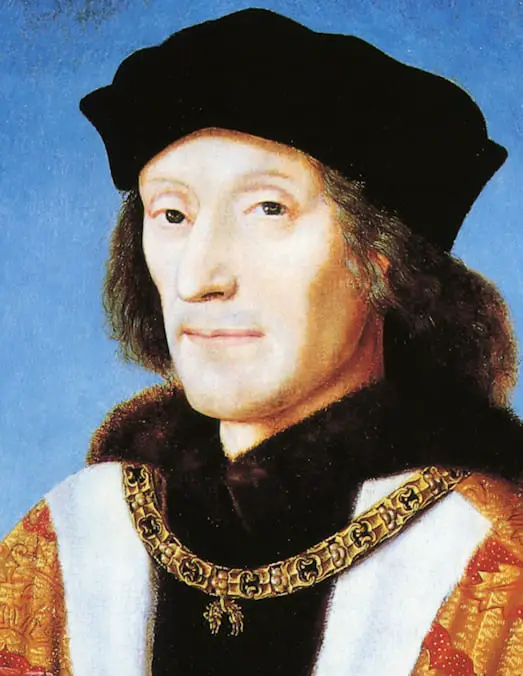
Henry VII was the first of the Tudor Monarchs, having secured the crown after defeating Richard III at the Battle of Bosworth Field. At the time of his accession the religion of England was Roman Catholic as it had been since the sixth century. Although some people were beginning to question the practices of the Roman Catholic Church, these were a very small minority and had no impact at all on the official religion.
King Henry VIII 1509 – 1547 – Roman Catholic / Anglican
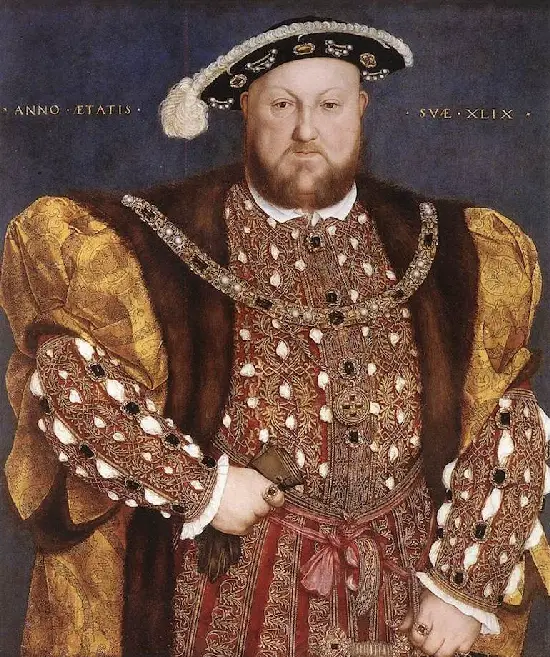
King Henry VIII succeeded his father as King of England. He was a religious man and, prior to the death of his elder brother Arthur in 1502, it had been thought that he may have entered the church. Within weeks of becoming King, Henry had married his brother’s widow, Catherine of Aragon. However, their marriage was blighted by its failure to produce a Henry with a male heir.
Although the Reformation movement led by Martin was gaining traction in the German states and had some followers in England, the country remained firmly Roman Catholic. In 1521 Henry VIII wrote a book called Septum Sacramentarian that defended the Roman Catholic faith.
By 1527, Catherine of Aragon was past child-bearing age and the only surviving child from their marriage was Princess Mary. It was believed at that time that women were not able to rule and that the country would therefore be ruled by whoever she chose to marry. The issue consumed Henry and, having turned to the Bible for answers and found a passage in Leviticus that showed that his lack of male heir was God’s punishment for his marrying his brother’s widow.
The King had also fallen in love with Anne Boleyn, the daughter of Thomas Boleyn, and wanted to marry her. He appealed to the Pope to grant him a divorce. The Pope was under the control of Catherine’s nephew, Charles V and stalled for time.
By the early 1530s Henry’s patience was wearing thin and he was persuaded by Thomas Cromwell and Thomas Cranmer to make the Break with Rome and declare himself Head of the Church in England. The subsequent English Reformation founded the Anglican Religion (known today as the Church of England). Anglicanism retains many practices of Catholicism but the Monarch is the Head of the Church and Anglicans do not believe in transubstantiation (the power of priests to turn bread and wine into the actual body and blood of Christ).
The religion of England remained Anglican for the remainder of Henry’s reign.
King Edward VI 1547 – 1553 – Protestant
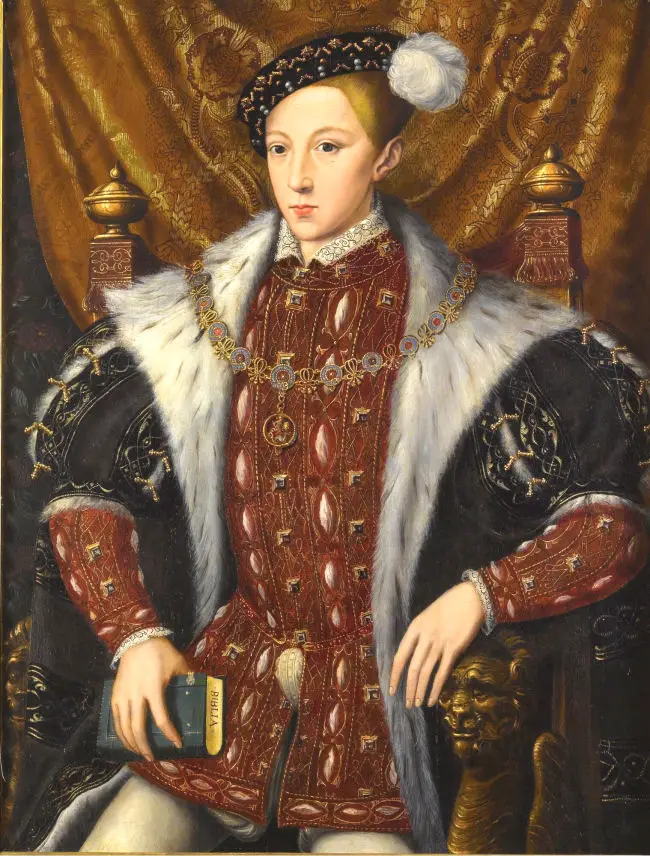
Edward was the son of King Henry VIII by his third wife, Jane Seymour. He became King at the age of nine years. Because he was a minor, Henry VIII had designated a regency council to rule until the King reached his majority. However, Edward’s uncle, Edward Seymour, took full control of the King and gave himself the title Protector of the Realm.
Seymour was a staunch Protestant and saw that the young king was educated by Protestant tutors. The religion of England was changed to Protestant and use of a new Protestant Common Prayer Book was made mandatory.
In 1553, the young King Edward developed tuberculosis. It soon became clear he was dying. Not wanting his Catholic sister Mary to succeed, Edward wrote and signed the Devise for the Succession which passed over his sisters Mary and Elizabeth and settled the succession on Edward’s second cousin Jane Grey.
Lady Jane Grey 1553 – Protestant
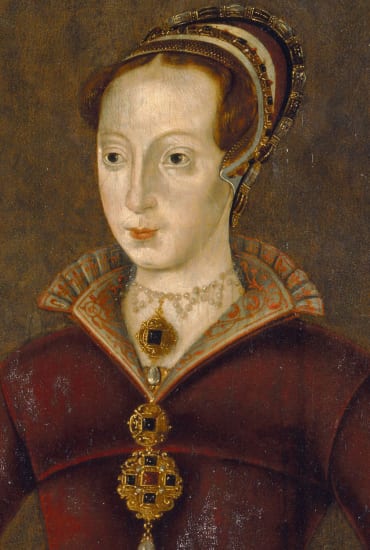
Jane Grey was the granddaughter of King Henry VIII’s younger sister, Mary. Her parents, Henry Grey and Frances Brandon, had agreed a marriage to Guildford Dudley, son of the Duke of Northumberland, Lord Protector since 1550. She was proclaimed Queen on 10th July 1553.
However, her accession was not popularly received by the people who knew that King Henry VIII’s will meant that Mary was the rightful Queen.
Upon hearing of her half-brother’s death, Mary declared herself the rightful Queen and on 12th July raised her standard at Framlingham. She soon had a force of more than 15,000, enough to march on London. The council quickly changed sides and Mary was proclaimed Queen Mary I on 19th July 1553.
Jane Grey and her husband Guildford were imprisoned in the Tower. They were executed the following year after a failed rebellion to restore Jane to the throne.
Queen Mary I 1553 – 1558 – Roman Catholic
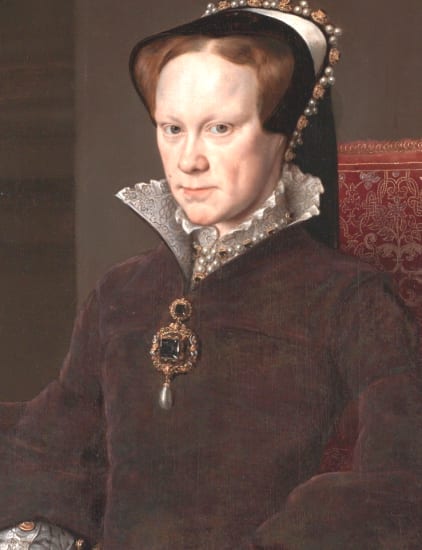
Mary was the daughter of King Henry VIII and Catherine of Aragon. She had been raised a Catholic and despite being forced to sign the Act of Supremacy 1534, had maintained her religion throughout the reigns of her father and brother.
One of her first acts as Queen was to repeal that Act and return England to Roman Catholicism. The Book of Common Prayer was removed and the Catholic service was restored. In 1555 new Heresy Laws were introduced that made practicing the Protestant religion a crime, punishable by burning. Mary earned the nickname ‘Bloody Mary’ for burning around 300 people during her short reign.
However, in the eyes of the people, her worst ‘crime’ was her marriage to King Philip of Spain. Although he had no real ruling power in England he did influence the Queen and persuaded her to commit troops to his war with France, a move which resulted in the loss of Calais, England’s last possession in France.
Mary and Philip had no children and when Mary died in November 1558 it was her half-sister, Elizabeth that succeeded.
Queen Elizabeth I 1558 – 1603 – Protestant
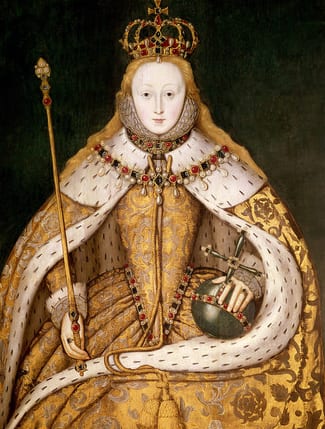
Elizabeth was the daughter of King Henry VIII and Anne Boleyn. She was 25 years old at the time of her accession and a committed Protestant. However, she was an intelligent woman and realised that after the religious chopping and changing of the last ten years finding a middle ground would be the best move to stabilise the country.
In 1559, a new Act of Supremacy was passed which declared Elizabeth Governor of the Church in England rather than Head of the Church. This subtle change in language placated those that would not accept a woman as Head of the Church. The same year an Act of Uniformity was passed that restored the use of the Common Book of Prayer but also allowed for both a Catholic and Protestant interpretation of Holy Communion.
While Elizabeth did not execute people for being Catholic, they were obliged to attend Protestant services and were fined huge sums of money if they did not. Those that incited rebellions against Elizabeth in favour of her Catholic second cousin, Mary Queen of Scots, were dealt with harshly. In 1586 Mary herself was executed after being found complicit in the Babington Plot.
Having seen the disastrous effects of marriage on her sister’s reign, Elizabeth did not marry, but rather used her unmarried state as a political device. While this helped provide stable government, without outside interference, it also meant that Elizabeth did not have an heir to continue the Tudor dynasty.
When Elizabeth died in 1603, the Crown passed to Mary Queen of Scot’s son, James.
Published Apr 28 2024 @ 6:50 pm – Updated –
Harvard Reference for this page:
Heather Y Wheeler. (2024). The Changing Face of Tudor Religion 1485-1603 Available: https://www.tudornation.com/the-changing-face-of-tudor-religion/ Last accessed [date]
